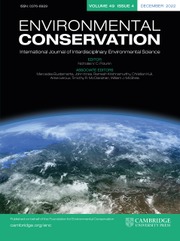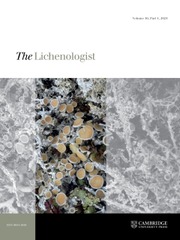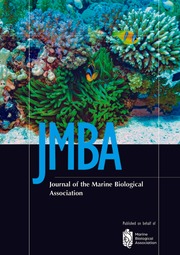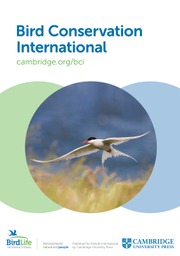The Earth in Transition
The Earth's biotic resources are experiencing a spreading crisis, which is leading not only to the most rapid loss of species in the past 65 million years, but also causing abrupt changes in the structure and function of natural communities. This disturbance, unfortunately, is the result of man's carelessness in the name of advancing civilization.
To identify and begin rectifying this dangerous situation, a group of outstanding environmental scientists has compiled a collection of case studies that illustrate the changes being wrought on the biosphere by the human presence. The first part of the book frames the issue with a series of papers on global change and patterns of impoverishment, with particular emphasis on the effects of air pollution. Successive sections explore the nature of chronic disturbances in a variety of ecosystems including forests, woodlands, grasslands, tundra, and aquatic systems. The book concludes with two chapters that offer possible solutions to this critical situation. By defining the major types of changes in the structure and function of natural communities exposed to chronic disturbance, the authors hope to instill concern and, ultimately, a change of policy.
- Author is President of the Woods Hole Research Center
- Former President of the Ecological Society of America
Reviews & endorsements
"All in all, this is an exceptionally competent book, the only one of its sort to achieve a systematized, also systemic, insight into the question of how far and how fast we are reducing the biotic diversity of the Earth." Norman Myers, Nature
"This volume is an important contribution because for the first time we see a concerted effort to describe the many dimensions and pervasive nature of biotic impoverishment. The message is grounded in sophisticated ecological science and it comes from leading ecologists." James R. Karr, Journal of the North American Benthological Society
"This important book helps us to understand that environmental processes can develop into what we might call both positive and negative feedback loops." Tim McKay, Econews
"Woodwell has assembled a collection of top-notch scientists to treat the problem across this wide geographical and ecological range. What emerges is a well-written and excellent set of syntheses." Peter S. White, American Scientist
"...a well produced, well written, and reasonably priced book. It provides a worthwhile introduction to and overview of problems of disturbance in a variety of situations, and it is suitable for students, researchers, and decision makers in government and industry." Robin J. Tausch, Restoration Ecology
"...will prove an important summary for ecologists and enviromental scientists, as well as for policymakers, economists, legislators, and students of environmental ethics." the Quarterly Review of Biology
Product details
March 2010Paperback
9780521398183
548 pages
229 × 152 × 31 mm
0.8kg
Available
Table of Contents
- Preface
- Acknowledgements
- List of contributors
- Part I. Global Change and the Patterns of Impoverishment:
- 1. The earth under stress: a transition to climatic instability raises questions about patterns of impoverishment George M. Woodwell
- 2. The experimental impoverishment of natural communities: effects of ionizing radiation on plant communities, 1961–1976 George M. Woodwell and Richard A. Houghton
- 3. Air pollution and temperate forests: creeping degradation F. Herbert Bormann
- 4. The long-term effects of air pollutants on lichen communities in Europe and North America D. L. Hawksworth
- 5. Biotic impoverishment in Northern Peatlands Eville Gorham
- 6. Climatic change and the survival of forest species Margaret Bryan Davis
- 7. The atmosphere and the future of the biosphere: points of interactive disturbance Michael Oppenheimer
- Part II. Chronic Disturbance and Natural Ecosystems: Forests:
- 8. The restoration of Nonsuch Island as a living museum of Bermuda's precolonial terrestrial biome David B. Wingate
- 9. Patterns of impoverishment in natural communities: case history studies in forest ecosystems - New Zealand A. F. Mark and G. D. McSweeney
- 10. Changes in the eucalypt forests of Australia as a result of human disturbance R. L. Specht
- 11. Impoverishment in Pacific Island forests Dieter Mueller-Dombois
- 12. Deforestation in Brazilian Amazonia Philip M. Fearnside
- 13. Incentives for sustainable forest management Robert Repetto
- Part III. Chronic Disturbance and Natural Ecosystems: Woodlands, Grasslands and Tundra:
- 14. Changes in the Mediterranean vegetation of Israel in response to human habitation and land use Zev Naveh and Pua Kutiel
- 15. Bromus tectorum, a biotic cause of ecosystem impoverishment in the Great Basin W. D. Billings
- 16. Detecting early signs of regional air-pollution injury to coastal sage scrub Walter E. Westman
- 17. Arctic ecosystems: patterns of change in response to disturbance L. C. Bliss
- Part IV. Chronic Disturbance and Natural Ecosystems: Aquatic and Emergent Ecosystems
- Section A. Marine Systems:
- 18. Changes in a Red Sea coral community structure: a long-term case history study Y. Loya
- 19. Are deep-sea communities resilient? J. Frederick Grassle, Nancy J. Maciolek and James A. Blake
- 20. Species dominance-diversity patterns in Oceanic communities John A. McGowan
- Section B. Freshwater Systems:
- 21. Natural and anthropogenically imposed limitations to biotic richness in fresh waters David W. Schindler
- 22. Human impacts on the South Florida Wetlands: the Everglades and Big Cypress Swamp William A. Niering
- 23. The impoverishment of aquatic communities by Smelter activities near Sudbury, Canada N. D. Yan and P. M. Welbourn
- 24. Biotic impoverishment: effects of anthropogenic stress John Cairns Jr and James R. Pratt
- Part V. Conclusion: Steps Toward a World that Runs Itself:
- 25. Steps toward sustainability J. Gustave Speth
- 26. A reaction from a multitude Donella H. Meadows
- Name index
- Subject index.









